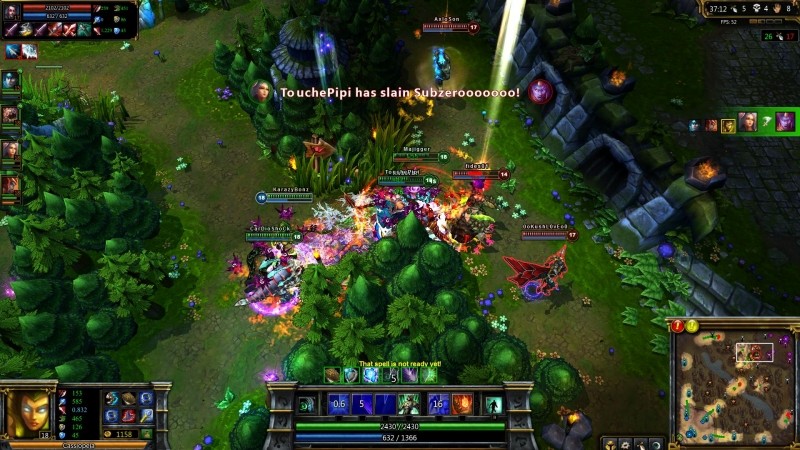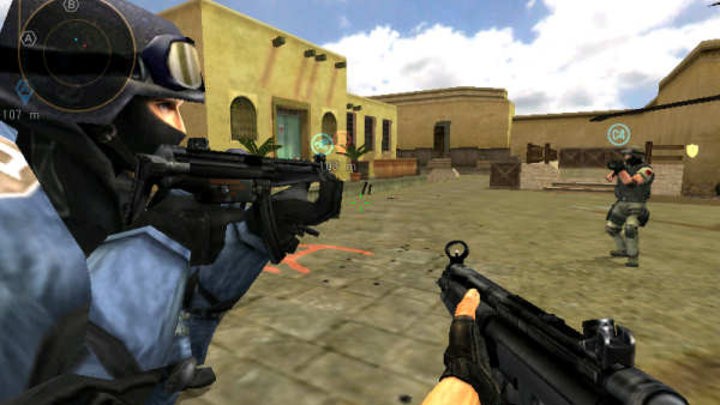
A recent report from Super Data Research, whose data is collected directly from publishers and developers and builds on the digital point of sale data from millions of gamers, ranked the top earners worldwide for free to play games.
Topping the list was Tencent’s CrossFire and League of Legends, who together took home an annual gross of $1581 million. Media company Nexon grabbed three of the top ten spots with a combined worth of $800 million. Wargaming took $372 million for World of Tanks (which it eventually plans to launch on the Xbox One, reportedly). Lineage 1 took the sixth spot with $257 million in total sales.
World of Warcraft, while losing subscribers this year, generated $213 million (note: this report is for micro-transaction sales only, not subscriptions). An oldie but goodie, Star Wars: The Old Republic earned $139 million, and Valve took the last two spots with Team Fortress 2 and Counter-Strike Online.
More highlights from the report include:
- The US digital games market grew 11% in 2013, reaching $11,766 million in sales across all segments, up from $10,582 million a year earlier.
- The social games segment totaled $1,815 million in sales in 2013, down 21% from a year earlier.
- The free-to-play online games category totaled $2,893 million in sales in 2013, up from $1,991 million in 2012 (+45%).
- The pay-to-play segment totaled $1,126 million in sales in 2013, losing 19% from 2012. Subscription-based online games stabilized, month-over-month, totaling $83 million, as the total number of gamers in this category reached 5.3 million in December.
- The US mobile games market totaled $3,063 million in spending in 2013, up from $2,391 million in 2012 (+28%).
- The combined DLC segment (PC + console) totaled $2,870 million in sales in 2013, up 13% from a year earlier.
This is a guest post by Wendy Boswell, technical blogger/writer at Intel. She's also editor for About Web Search, part of the New York Times Company
The freemium business model
Tencent’s CrossFire is a free to play game with a basic in-app purchase monetization model; however, the game is set up that even the most basic of accoutrements has to be paid for with real money, which might account for such amazing revenues in 2013. Does this model essentially reward money over skill? The answer seems obvious, but that is the model that seems to monetize most effectively. More from i4u.com:
“Reportedly, the game veers into pay-to-win territory as you can shell out cash for better guns, armor and various boosts that will increase your prowess in combat. Some premium items can only be purchased with real world money, and it seems if a player spends a decent amount, they’ll have an advantage over friends and strangers alike. Increased power is a far more effective motivator than simple cosmetic changes, hence CrossFire’s massive revenues. It goes against the fundamental tenant of a good free-to-play, microtransaction-based game, don’t let players pay for a direct advantage over others, but for whatever reason their audience doesn’t care, Tencent has struck gold with CrossFire.”
The freemium business model works, no doubt about it. 2013 showed an increasing trend towards this model, with pay for play apps making up an increasingly smaller portion of overall app revenues. An end of year report from Distimo demonstrates this quite effectively:
“The Freemium Business Model – free apps with in-app purchases – makes up the largest revenue share in the Apple App Store. Our analysis showed that this revenue share even increased over the year. While the Freemium revenue share was at 77 percent in January, it grew to 92 percent in November based on globally aggregated data for the Apple App Store. The other business models, paid apps without in-app purchases and paid apps with in-app purchases, made each only 4 percent of the revenue in November 2013. The same trend holds true for Google Play.” – 2013 Year in Review, Distimo.com
Asian domination
Most of the games that made this list do the majority of their business in Korea, China, and other Asian countries. And in-app purchases work in these countries; recent reports estimate that China’s game industry brought in $9.7 billion in revenue last year across all segments, with that figure predicted to grow to $21.7 billion by 2017. More stats on the Asian gaming market from App Annie:
- According to Niko Partners’ 2013 Chinese Mobile Games Market Report, in 2012 there were 192 million mobile gamers in China. This year there will be 288 million. In 2014 there will be 390 million.
- Mobile gaming is the fastest growing segment of the entire Chinese games market.
- Even in smaller cities where not everyone owns a phone, the ratio of phones to people is more than 125%.
- Mobile app users are spending 40% more time on their devices playing games in 2013 than they did in 2012, and they visit their favorite games 41% more often than in 2012

Interestingly enough, my research for this article found that CrossFire, the top revenue-generating game for the year with in-app purchases, isn’t necessarily what most gamers would classify as “top of the line” graphics; in fact, quite the opposite. Why does it do so well in China and other Asian countries? Because it’s easy to download via rural networks that might not have the same speeds and processing capabilities that other networks have, plus, users in these countries are more accustomed to in-app purchases than their Western counterparts. Here are some stats from the International Data Corp that bear this out (primarily for Android):
- 44% of Android users in China use Wi-Fi for their access to the Internet, especially for video. 31% get their information from 2G networks, and 23% use 3G.
- App downloads for Chinese Android device owners are growing exponentially: the average user downloaded 10.5 apps per month in Q3 2013; the previous year, it was 8.2 apps monthly
- 15% of Android users in China install at least one new app a day vs. 11% in Q3 2012
- 59% use app stores to download their apps, while 13% use online app searches and 21% use their PCs to sideload apps onto their Android devices
It will be interesting to see how this trend plays out in 2014; pundits seem to universally agree that the Asian market is the powerhouse for app development.
Free to play = better retention of users? Quite possibly
Here’s an interesting scenario to think about: say you’ve downloaded a free to play game, maybe even one of the ones listed in the above-referenced report. You start to level up, and the further you go, the more time and money you’re investing in this initially free to play game. Perhaps you even end up spending a significant amount of money creating something you feel pretty proud of. If you stopped playing this game to play another game, you would have to start all over again on that new game as nothing would obviously transfer over. It makes sense at that point to keep playing the game you’re already investing. The cost of switching to another game at that point becomes prohibitive, and what was once just a “free” game has turned into something else entirely.

Of course, this scenario doesn’t play out for every user. But it’s interesting to look at the psychology behind gaming and free to play games. The same person who might balk at springing $50 for a game won’t blink an eye forking over .99 to level up in a game that they might only play a few times. This makes the barrier of entry lower for developers; they know that people are going to be more willing to jump into something new, which makes the potential for monetization higher. It’s a good circle of economics to be caught up in (as we can see from the amount of money that the top gaming houses are making from this model alone).
Getting users to download the game is the first hurdle. If you can make it free, you’ve already got them in the door. That’s where the true genius of the freemium model really comes into play. There are tons of free apps already, and consumers are understandably wary of paying for something when they can find something that is pretty much the same thing for free. The adage “if you can’t beat ‘em, join ‘em” comes to mind with apps that are still demanding money up front; as free apps are only predicted to grow even more popular in coming years. A recent report from Gartner bears this out; predicting that free apps will account for 94.5 percent of all downloads by 2017:
"These app stores are still increasingly active due to richer ecosystems and large and very active developer communities," Gartner research director Brian Blau said today in a statement. "However, we expect average monthly downloads per iOS device to decline from 4.9 in 2013 to 3.9 in 2017, while average monthly downloads per Android device will decline from 6.2 in 2013 to 5.8 in 2017…. IAP purchases will drive 17 percent of the store revenue in 2013 and increase to 48 percent in 2017. However, as with downloads, IAP is expected to have strong growth in 2013 and 2014 and slow in later years. This is due to smart devices reaching more mass-market consumers whose willingness and/or affordability to spend on IAPs is lower than early adopters. Nevertheless, IAP will become a major monetization method for apps stores and developers.”
Free apps to be the norm in the future
Moving forward and judging strictly from current and predicted industry trends, it seems that the freemium monetization model is here to stay. It’s a win-win with consumers, but it’s especially successful for developers, who are able to get their apps downloaded by a wider user base, along with better potential user retention. What do you think of the freemium business model – is it viable for the long term, or do you see it fizzling out in favor of something else? Let us know in the comments.
https://www.techspot.com/news/55515-are-free-to-play-games-set-to-dominate-the-future-of-apps.html